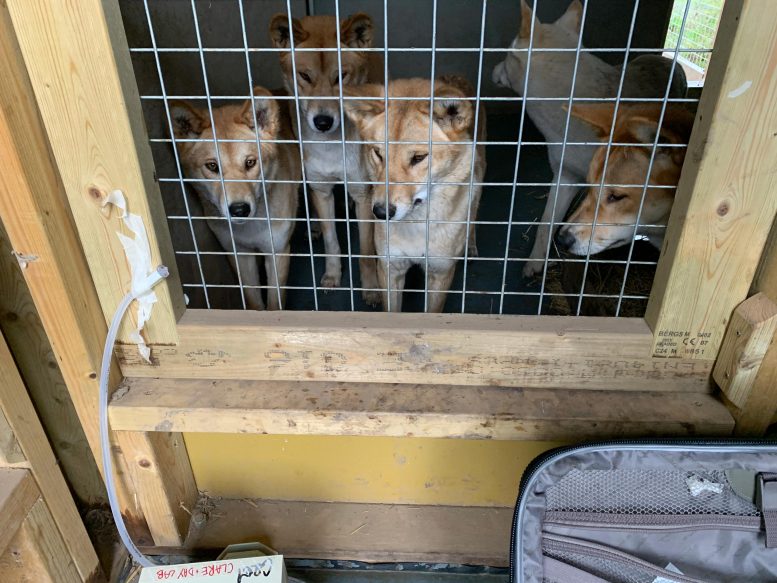
This photograph shows dingos at Hamerton Zoo in the UK eye air sampling equipment with curiosity. Credit: Elizabeth Clare
Two independent studies have demonstrated the effectiveness of using airborne environmental DNA to identify animal species in zoos. This method provides a less intrusive way of monitoring biodiversity and could be particularly useful for detecting elusive wildlife.
Airborne DNA Studies in Zoos
The air in a zoo is full of smells, from the fish used for feed to the manure from the grazing herbivores, but now we know it is also full of DNA from the animals living there. In the journal Current Biology on January 6th, two research groups have each published an independent proof-of-concept study showing that by sampling air from a local zoo, they can collect enough DNA to identify the animals nearby. This may prove to be a valuable, non-invasive tool to track biodiversity.
Monitoring Elusive Animals
“Capturing airborne environmental DNA from vertebrates makes it possible for us to detect even animals that we cannot see are there,” says researcher Kristine Bohmann and head of the team at the University of Copenhagen.
Terrestrial animals can be monitored in many ways: directly by camera and in-person observation, or indirectly by what they leave behind, like footprints or feces. The drawback to these methods is that they can involve intensive fieldwork and require the animal to be physically present. For example, monitoring animals by camera requires knowledge of where to put the cameras on the animal’s path, sifting through thousands of pictures, and usually a bit of luck.
Challenges of Airborne DNA Detection
“Earlier in my career, I went to Madagascar hoping to see lots of lemurs. But in reality, I rarely saw them. Instead, I mostly just heard them jumping away through the canopy.” says Bohmann. “So, for many species it can be a lot of work to detect them by direct observation, especially if they are elusive and live in very closed or inaccessible habitats.”
“Compared to what people find in rivers and lakes, monitoring airborne DNA is really, really hard, because the DNA seems super diluted in the air,” says Elizabeth Clare, lead researcher of the Queen Mary University of London team (Clare is now at York University in Toronto). “But our zoo studies have yet to fail for different samplers, genes, locations, and experimental approaches. All of it worked and surprisingly well.”
Methodology of eDNA Collection
Bohmann and Clare draw heavily from their past research monitoring wildlife by collecting other sample types containing DNA shed by animals. This is referred to as “environmental DNA,” or eDNA, and is a well-established technique used most frequently to monitor aquatic organisms by sequencing eDNA from water samples.
“Air surrounds everything, and we wanted to avoid contamination in our samples while optimizing true detection of animal DNA,” says Bohmann. “Our newest work with airborne eDNA involves what we usually do when processing eDNA samples, just tuned up a little bit.”
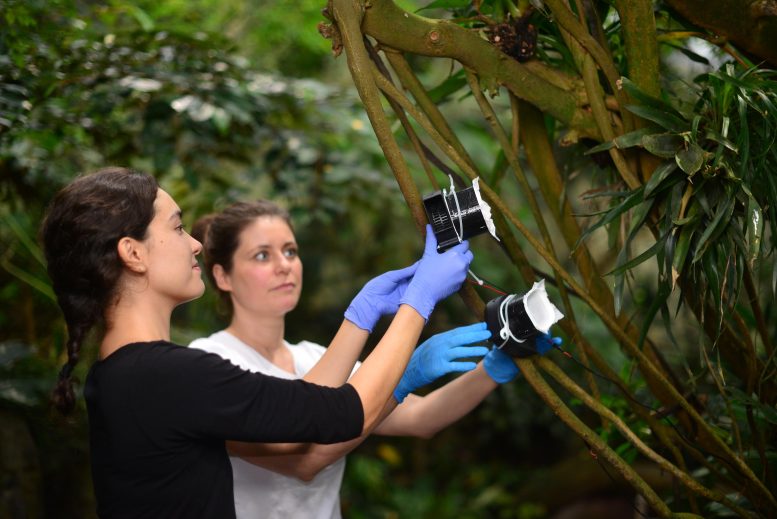
This photograph shows Christina Lynggaard and Kristine Bohmann collect air samples at the Copenhagen Zoo. Credit: Christian Bendix
Sampling Techniques in Practice
Each research group conducted their study at a local zoo by collecting samples at various places in the zoo, including inside walled-in enclosures like the tropical house and indoor stables, as well as outdoor enclosures in the open air. “To collect airborne eDNA, we used a fan, like one you would use to cool down a computer, and attached a filter to it. We then let it run for some time,” says Christina Lynggaard, first author and postdoctoral fellow at the University of Copenhagen.
The fan draws in air from the zoo and its surroundings, which could contain genetic material from any number of sources, like breath, saliva, fur, or feces, though the researchers have not determined the exact source. “It could be anything that can become airborne and is small enough to continue floating in the air,” says Lynggaard. “After air filtration, we extracted the DNA from the filter and used PCR amplification to make a lot of copies of the animal DNA. After DNA sequencing, we processed the millions of sequences and ultimately compared them to a DNA reference database to identify the animal species.”
The Significance of Small DNA Samples
“There’s a leap of faith component to some of this because when you deal with regular tissue or even aquatic DNA samples, you can measure how much DNA you have, but with these samples we’re dealing with forensically tiny amounts of DNA,” says Clare. “In many cases, when we only sample for a few minutes we can’t measure the DNA, and so we have to jump to the next stage of PCR where we find out whether there’s any in it or not. When we sample for hours we get more but there is a tradeoff.”
In each study, the researchers detected animals inside the zoo and wildlife from the nearby. Clare’s team from Queen Mary University of London detected DNA from 25 species of mammals and birds, and even DNA belonging to the Eurasian hedgehog, which is endangered in the UK. Bohmann’s team at the University of Copenhagen team detected 49 non-human vertebrate species, including mammal, bird, reptile, amphibian, and fish species. These included zoo animals like the okapi and armadillo and even the guppy in a pond in the tropical house, locally occurring animals like squirrels, and pest animals like the brown rat and house mouse. Further, they detected fish species used for feed for other animals in the zoo. Both teams took extensive measures to check that their samples were not contaminated, including by DNA already in their labs.
Advantages of Choosing a Zoo for eDNA Research
By choosing a zoo for the location of their studies, the researchers knew the position of a large collection of non-native species, so they could tell the difference between a real signal and a contaminant. “We had originally thought of going to a farm, but if you pick up cow DNA you must ask ‘Is that cow here or is it some cow a hundred miles away or in someone’s lunch?’” says Clare. “But by using the zoo as a model there’s no other way I would detect DNA from a tiger, except for the zoo’s tiger. It lets us really test the detection rates.”
“One thing both our labs do is develop and apply new tools, so perhaps it’s not so surprising that we both ended up with the same idea at the same time,” says Clare.
Collaboration Over Competition
However, the fact that both research groups are publishing at the same time in the journal Current Biology is far from coincidental. After seeing each other’s articles on a preprint server, the two groups decided to submit their manuscripts to the journal together jointly. “We decided we would rather take a bit of a gamble and say we’re not willing to compete on this,” says Clare. “In fact, it’s such a crazy idea, we’re better off having independent confirmations that this works. Both teams are very eager to see this technique develop.”
Reference: “Airborne environmental DNA for terrestrial vertebrate community monitoring” by Christina Lynggaard, Mads Frost Bertelsen, Casper V. Jensen, Matthew S. Johnson, Tobias Guldberg Frøslev, Morten Tange Olsen and Kristine Bohmann, 6 January 2022, Current Biology.
DOI: 10.1016/j.cub.2021.12.014

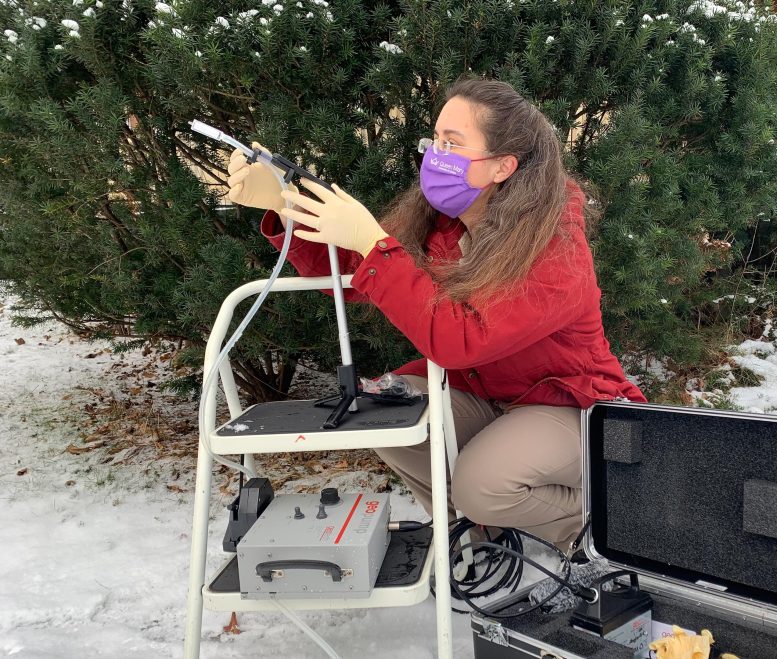



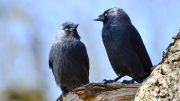


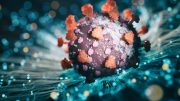
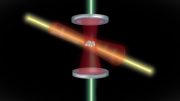
Be the first to comment on "Zoo Air Is Filled With Enough DNA To Identify the Animals Inside"